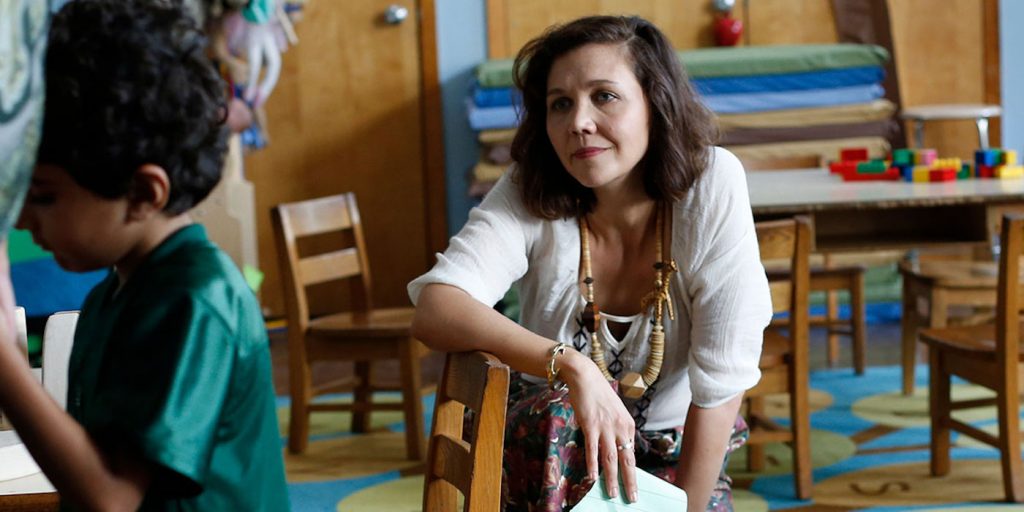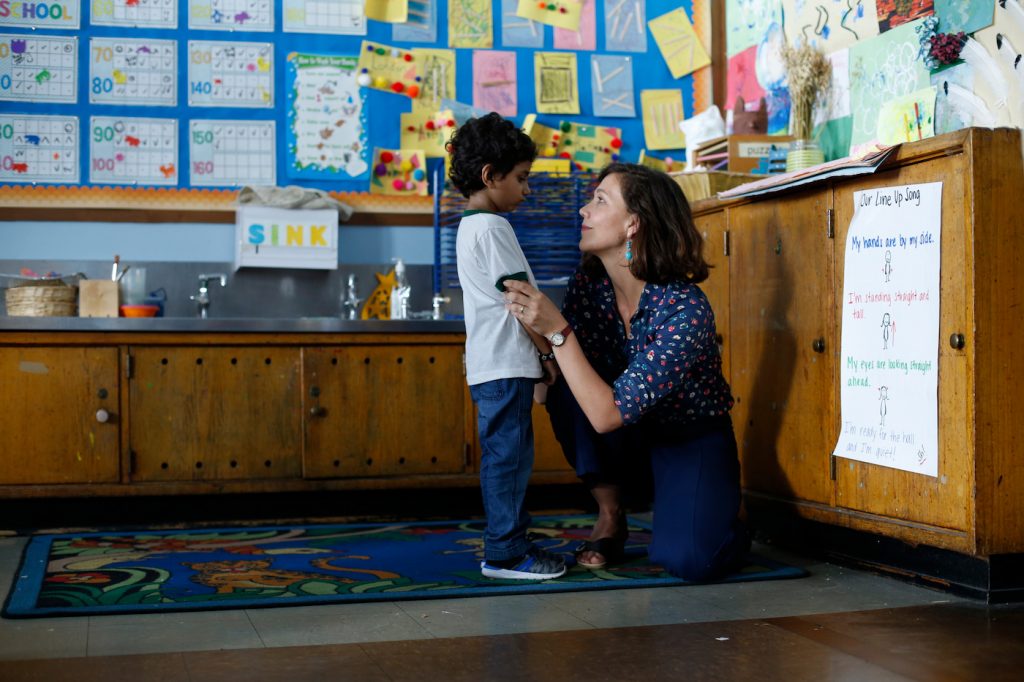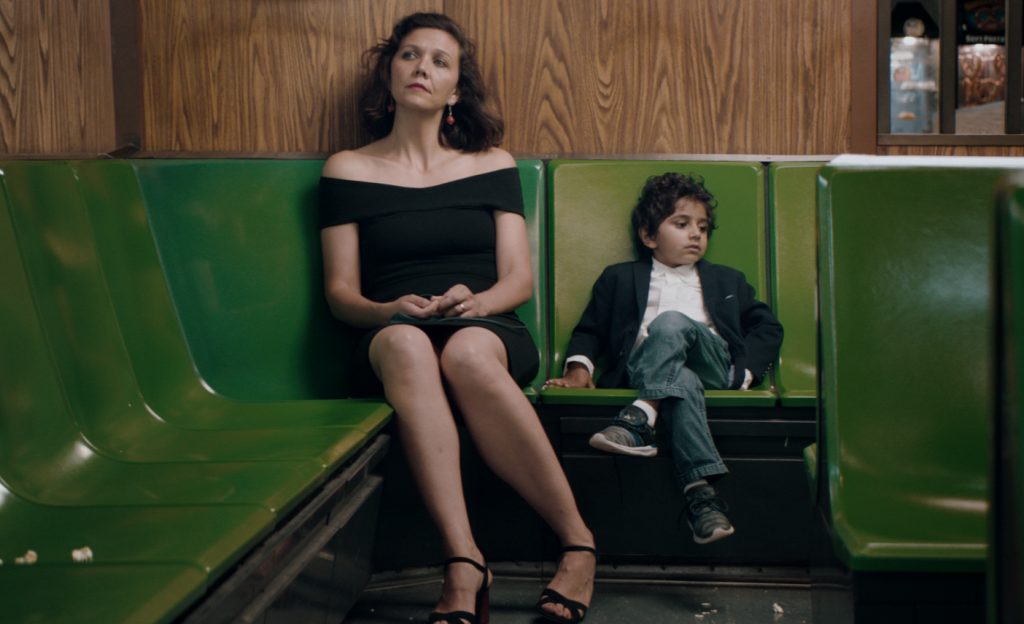TIFF 2018: DP Pepe Avila del Pino on Bending Genres in The Kindergarten Teacher
Director of photography Pepe Avila del Pino lensed Sara Colangelo‘s daring The Kindergarten Teacher (Netflix, premiering on October 10, 2018), starring Maggie Gyllenhaal about the unusually intense bond Gyllenhaal’s kindergarten teacher Lisa Spinelli forms with a student, Jimmy Roy (Parker Sevak) she’s sure is a child prodigy. Written by Colangelo and based on a script by Nadav Lapid, an Israeli writer/director whose 2014 feature of the same name inspired the film, Avila del Pino had the tough task of taking a film that slipped fluidly between several genres and crafting a moving, cohesive story. The Kindergarten Teacher screened yesterday here at the Toronto International Film Festival, and tracks Gyllenhaal’s Staten Island teacher as her fascination with the child turns into obsession, blurring the lines between nurturing his talent and inflaming her own dangerous needs.
We spoke to Avila del Pino about working with Colangelo and Gyllenhaal, who suggested him for the film after working with him on HBO’s critically acclaimed The Deuce. Avila del Pino has also helped give two other eye-popping TV series their sheen; Netflix’s crime thriller Ozark and Amazon’s mind-bender sci-fi series Philip K. Dick’s Electric Dreams.
You mentioned how the film boldly transcends (and combines) genres—how did you modify your technique to capture these shifting tones?
When we started talking and discovering the visual language of the film we knew the style had to be subtle but powerful enough to carry these tones. Some scenes, like when the teacher and the kid are bonding, are shot handheld, in a very intimate location, and with a smooth camera making the scene about their relationship. Later in the film, we see them again, but her intentions are more clear to the audience, so the camera stays back, it doesn’t move, and it takes a more voyeuristic and judgemental perspective on the scene. There are examples like these throughout the film. Sara and I mapped beforehand every slow zoom, or every wide handheld shot so that the movie maintained its tonal balance.
You’ve worked with Maggie Gyllenhaal on HBO’s The Deuce—how much does it help you as a DP to work again with a performer you have a working relationship with.
In general terms, it’s great. There is already a level of trust and communication that allows moving things forward faster. It’s super important to make every actor feel comfortable in the way they are being portrayed. Also, your craft as a cinematographer has to be invisible. They need to forget about it completely. So when they know and trust your work this part of the process is easier.
In the particular case of Maggie—she’s a fantastic storyteller. I think she can see the bigger picture with more clarity than anyone else on set. And she can understand how every decision made on the day—not only her performance but choices with location, camera, even sound—will affect the structure, feel and rhythm of the movie.

There’s an old saw in Hollywood—don’t work with children or animals—what was it like working with the child actor(s) here?
I’ve worked with kids many times, even as a director on my projects, and I always find it so much fun. There’s an energy that revitalizes the set, but also there’s something essentially raw and authentic in their performances that make each take feel like it’s own unique moment that’s being captured on film but will never happen exactly the same way again, and that’s exciting in many ways. Children can’t pretend to be scared, or confused or happy… they have to be!
There are, of course, production limitations, the number of hours they can work and the fact that they can get tired and distracted after a couple of hours. All these factors make the scheduling very challenging, but the actual shoot is always fun. Parker [Sevak], in particular, was a champion. Smart, aware, sensitive, willing to work and ready to play a little between takes.

What did you and Sara Colangelo discuss before principal photography began? What was your plan of attack?
We started a conversation a few months before. First just throwing out ideas and references, then talking about particular scenes. Finally, we shot listed the whole film…twice. Because by the time we were done with it the first time (it took us a couple of weeks) we realized our visual vocabulary had evolved, so we went back to the beginning of the film and did it all over again. Again, because of the limitations of working with children, our shooting schedule was very ambitious, and so we had a backup plan or alternative plan of attack for scened that could be complicated with the kids.
In the end, we did improvise some, but we had a very clear map of the film so that every time we went of our plan the choices would still fall into what we knew the movie had to be.

How did the New York location affect your shooting style?
We shot it all in NYC in the middle of summer. We had to deal with hot, humid locations, and lots of green! I think early spring foliage would have helped with the general atmosphere of the film, the sweat did add something to the necessity to act of some of these characters.
Tell me about your collaboration with production designer Mary Lena Colston and costume designer Vanessa Porter on this film? How did you capture the look and feel of a struggling teacher in New York City?
Our resources were limited, but we found great locations, we managed to control a color palette, and were able to give an arch to it. Sara, our director, was amazing at encouraging and pushing to keep us all on the same page and with constant conversations.
You’ve worked on a lot of fascinating television in recent years—The Deuce, Ozark, Philip K. Dick’s Electric Dreams—does the job change in any significant way working on TV and film?
I’ve been lucky to have had the chance to work on TV, but with single directors. I have shot the pilots or, like Ozark, the first two episodes (directed by Jason Bateman), and I did all eight episodes for Quarry, but they were all directed by Greg Yaitanes. In that sense, my approach and process in these TV projects have been very similar to a feature film. The director and I share ideas, talk references and come up with a visual style and language for our episodes and we hope that the directors and cinematographers that come after us will follow the style we have established.
So I think the process is very similar. On these TV projects, there are writers and showrunners, and they all have creative input and control over the show, but the conversations are the same, just shared with more people.
I haven’t had to shoot the following episode on a TV show yet, and I believe that would be a different experience. In those cases, the DP has to work with different directors for each episode and have to follow the locations and equipment (camera and lenses) and crew that the pilot DP had put together.
So again, I think I’ve been lucky with the TV projects I’ve worked so far because they resemble the workflow and communication of a feature film.
Featured image: Maggie Gyllenhaal and Parker Sevak in ‘The Kindergarten Teacher.’ Courtesy Netflix.



